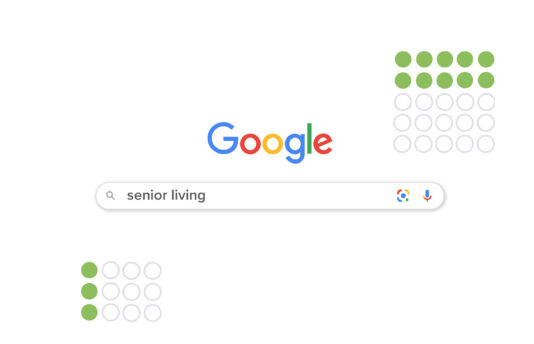In the new social media arena of X vs. Threads, we find ourselves amidst a fascinating clash of communication styles. How do these two formats compare and what sets them apart in their ability to captivate audiences? Can the simplicity of a single tweet surpass the richness of a well-crafted thread? Welcome to the world of X vs. Threads!
1. The recent changes made to X are causing disruption, and Threads is aiming to fill the gap.
Advantage: Threads
The drastic changes that have been made to the X platform do not seem to be having a positive impact. For one, X users can now pay $8 for the coveted blue checkmark that gives their posts priority in the algorithm. However, this is having a negative impact on people’s feeds, given that many popular users don’t want to pay for the verification they already earned. This means that lower-quality content is being posted by users who do pay and is taking precedence in other users’ feeds.
Aside from the blue checkmark, increasingly more X features are being paywalled. For example, if a user wants to add multifactor authentication via a text to their profile, they now have to pay. This was previously a free feature.
Added costs aren’t the only changes driving people away. Recently, X implemented a feature where no tweets were available to the general public without a login. This broke a common traffic source for them—embedded hyperlinks in articles. In addition, X recently rate-limited users, both paid and unpaid, to only being able to see a certain number of tweets per day for each group in an attempt to lower their own data usage on their servers.
What may be the ultimate push away from X and toward another platform, like Threads, is the contradiction of it all. Users are being banned for saying fairly tame things, yet bots and misinformation are prevalent due to the platform’s focus on “free speech.” Threads is now aiming to capture this disengaged audience’s attention with very similar features. The social media app offers the ability to post text, images and video content, as well as interact with content in similar ways as X users would, via replies, reposts and likes.
2. You need an Instagram account to use Threads.
Advantage: X
According to Forbes, Threads reached 100 million downloads faster than any app ever. Sounds great, right? But let’s not get ahead of ourselves. Though interest was initially high (who doesn’t love a shiny new toy?!), daily active users had dropped by 20% after mere days.
This makes sense when you consider the app’s requirement of an Instagram login. People may just be downloading Threads and logging in because they already have an Instagram account but won’t necessarily follow up on the experience since it’s not what they’ve come to expect from Instagram.
3. Instagram’s photo-centric format causes identity crisis for Threads.
Advantage: X
Instagram users are used to a photo-forward platform. While some may take to their captions to write pretty words, many prefer to keep it simple and focus on the photo/video-sharing aspect of the platform. Because of this, some X users have noticed Threads users posting content without a lot of substance. This could be due to the fact that they’re not sure how to create content without a photo focus to support it.
4. X is highly political.
Advantage: Threads (for now)
X is highly political in nature. Due to Meta and X’s very different treatments of political content, it’s uncertain whether a large portion of X’s userbase would want to migrate. However, for users either fed up with or exhausted by the divisive political nature of X, Threads could prove to be the alternative they’re seeking.
Head of Instagram Adam Mosseri recently stated there are no plans for the Threads app to become a political platform. Mosseri wrote, “There are more than enough amazing communities—sports, music, fashion, beauty, entertainment, etc.—to make a vibrant platform without needing to get into politics or hard news.” While this is a pro for those who prefer to keep their politics offline, others who find open debate that X allows could prove more hesitant to change.
5. X offers anonymity, which many users value.
Advantage: X
When it comes to X, many users value anonymity, including not using their real names or pictures on their accounts. This is completely at odds with how Instagram functions, meaning X users likely aren’t going to stick around on an app that requires them to bare it all to the world.
6. There are other established competitors out there.
Advantage: Neutral
The migration away from X has been a long time coming for many users who are fed up with Elon Musk’s constant stream of changes. As such, many X users who wanted to leave the platform have already migrated to Mastodon, which touts itself as “the largest decentralized social network on the Internet.” The app features the ability to post audio/video/image content, and also offers features like content warnings and accessibility descriptions.
Other X users who wanted an alternative are waiting on BlueSky (or are the lucky few who already got invite codes), another new X alternative developed by the original creator of Twitter, Jack Dorsey.
These platforms are closer in culture to what X users have come to expect, rather than having to adapt to new etiquette on an already established platform, as is the case with Threads’ integration with Instagram.
7. Brands can’t—and shouldn’t—be the pioneer of new social platforms.
Advantage: Neutral
Social platform culture can definitely be guided by the platform-makers, but influencers and users can have an even greater impact on organically growing culture through posting styles, in-jokes, trends, etc. These are all usually developed by the userbase, as social users tend to resist obvious brand influence.
And while plenty of brands were quick to hop on the Threads trend, that doesn’t mean you need to. Brands who jump in very early can look like pioneers if they fit the platform’s “vibe”—but those who don’t can look very out of place. Being a brand is, in part, acting a part, so it’s hard to be “organic” on a platform when you don’t even know what the stage looks like yet.
Plus, we can’t forget privacy concerns. With laws like the EU’s General Data Protection Regulation (GDPR) and the California Consumer Privacy Act (CCPA) in place, plus other proposals popping up all the time, privacy laws need to be at the forefront of every brand manager’s mind. Brands shouldn’t be on the ground floor of something that could harm brand safety or negatively impact their customers. Brands want to be the cutting edge, not the bleeding edge.
While the initial release of Threads has exposed a cultural mismatch between X and Instagram, culture is ultimately developed and defined by the users of a platform. So, whether you’ve already hopped on the Threads bandwagon or are waiting things out, it’s worth watching the app’s culture develop and only dipping your toes in once you know how your brand fits in.











